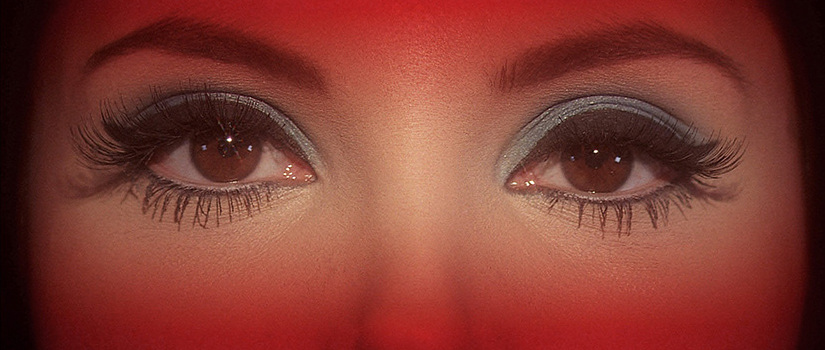By Seth Rafferty
Love is beautiful and hideous; uplifting and discouraging; simple and confusing. For millennia, our brothers and sisters in witchcraft have been baffled by the complex art of love magic, a dazzling form of sorcery that dates back to ancient cuneiform tablets. Since then, we have been crafting and perfecting love magic. Love magic is the conjuring of romantic and sexual feelings in others. While love magic can’t create new feelings, it can greatly amplify existing feelings. We were excited to find a cinematic representation of it. Directed by Anna Biller, The Love Witch (2016) lets us see this fantastic art form in motion, as love magic is used to reverse patriarchal ideas that women need men, flipping gender roles on their head.
The story follows the perspective of the glamorous Elaine Parks. Elaine has a very cheery outlook on the world, which Biller portrays through bright makeup, vibrant outfits, and almost disturbingly gleeful internal monologues. Despite our young sister’s abundant pep, however, it’s clear she has had some unhealthy relationships with misogynistic men in her life. The film indirectly conveys this information with Elaine thinking back to critical and uncomfortable things her ex Jerry and her father said. Biller allows the audience to deduce for themselves that these men were abusive and controlling, as Elaine’s gleeful perspective doesn’t allow her to explicitly say these things. For Elaine, love magic is a way of reversing the gender roles she has been hurt by and giving herself power over men. She makes the most stone-cold men weep for her and fall helplessly in love. Using love magic to reverse gender roles dates back to Hellenistic Greece, where philia love magic was seen as a way for women to gain some control in a very patriarchal society. In The Love Witch, Elaine masterfully engages in this long-dated practice.
However, as anyone who’s been around our craft can tell you, all witchcraft can have major setbacks. In Elaine’s case, the detriments of her sorcery are felt both by the men she subdues, who quickly go mad and die from love, and by Elaine’s good friend Trish. Trish sees Elaine’s ideas about pandering to the wishes of men as ridiculous. “What about what we want,” Trish asks. When the love magic becomes fatal for her husband, Trish is seen in all black, which is sharply contrasted with the bright pink outfits of everyone else in the scene. This is an interesting choice by Biller because Elaine is still full of glee while Trish, who seems to have a keener sense of gender equality, is left to mourn. Also interesting is how Trish puts on Elaine’s makeup and wig, a very clear symbol that she is jealous of Elaine’s sway over Richard.
Elaine’s love is an all-consuming love. Several images of stabbed hearts are shown throughout the film, including on tarot cards and in the painting of a lady removing a man’s heart. Elaine is love hungry, and the men she pursues can’t handle this amount of love and passion. However, when the men become helplessly attached to Elaine, she seems to lose interest in them. This complete reversal of typical gender relations is what makes Biller’s complex portrayal of love magic so effective. We can see the immense power the art can hold as well as the dangers it threatens. We can take Elaine’s story both as a guide for our own practices and as a cautionary tale. We will continue to look into love magic and further our understanding of its mystical wonders. Even if you are not a practitioner of witchcraft, we hope you can appreciate this exciting, visually stunning, and all-around fabulous guide to a severely underappreciated art form.
